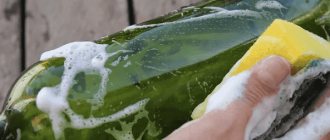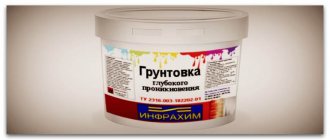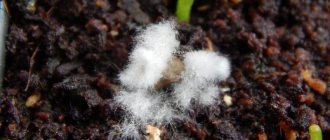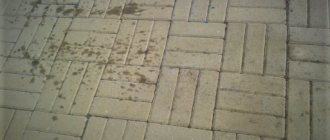The appearance of a green coating on the walls of the aquarium indicates an imbalance in the ecosystem of the home pond. Contamination of the walls is not only an aesthetic problem. Excessive development of algae can pose a serious threat to all inhabitants, so getting rid of greenery in the aquarium is the first priority of its owner. Algae are an integral part of the natural microflora of the tank, but their excessive development of green plaque begins when the conditions of detention are violated.
How to remove green deposits on the walls of an aquarium
A dense layer of green deposits in the aquarium impairs visibility.
The cause of contamination is microscopic algae - Protococcus. As a result of their growth and development, a greenish layer of cells is formed on the inside of the walls. If it is small, this is normal and will not harm the fish in any way. But if the plaque becomes so abundant that it is impossible to see through it what is in the aquarium, it’s time to take action.
Getting rid of green algae is simple: you need to wait until Protococcus completes the process of asexual reproduction by zoospores. The cycle lasts 3 weeks. During this period, all zoospores should settle on the walls and become full-fledged cells. As a result, the unpleasant green coating will gradually lighten and die off.
After 21 days, you can clean the glass using a scraper. It is easy to get rid of the remains of dead cells with a hose equipped with a water change system.
To ensure that the situation does not repeat itself, it is necessary to analyze the reasons why Protococcus appeared and make efforts to eliminate them. Most often, green deposits appear in containers that are placed in direct sunlight. High water pH also promotes algae growth. Eliminate these causes, and plaque formation will remain within normal limits.
If you clean the glass before the end of its life cycle, it will take months to scrub off the green mass on the walls of the aquarium.
What is needed for cleaning?
Having eliminated all the causes of plaque, it is necessary to properly clean the ecosystem of algae. How to clean and what to wash the aquarium with? Cleaning an aquarium at home requires the availability of special equipment, which can be purchased at any place where aquarium fish are sold.
Cleaning the aquarium from green deposits using a soft brush
To clean the aquarium you will need:
- a scraper to remove algae from glass;
- water container, volume from 10 l;
- prepared replacement water in sufficient quantity;
- filter accessories;
- siphon type pump;
- aquarium glass cleaner;
- baking soda or wine vinegar to clean the aquarium;
- 10% bleach solution;
- blade.
How to remove brown plaque on walls
Brown coating on walls and plants appears due to diatoms.
Brown coating may appear due to the development of diatoms. If it is discovered during the start-up of the aquarium and has not yet spread to the entire area, you can get rid of it by maintaining proper maintenance. In this case, they will disappear within two weeks. It is recommended to regularly clean the glass and change up to 30% of the water. With this approach, intensive development of plants will displace diatoms.
If the appearance of diatoms is detected in an existing aquarium, you should change the liquid more often, adding about a quarter of fresh water 2-3 times a week. It is also necessary to clean glass and interior decorative elements using brushes, scrapers, and sponges.
In addition, you should pay attention to the filter. For example, the filtration rate may decrease due to air pollution or contamination of the water intake system. It is also worth reducing the daylight hours to 360 minutes per day, then increasing its duration to 10 hours over 14 days. Lamps need to be changed once a year.
Residents such as Otocinclus, Theodoxus snail, Siamese algae eater, Hypostomus plecostomus, Gyrinocheilus and mollusks will also help get rid of brown algae.
Controlling diatoms with chemicals is in most cases ineffective and can worsen the situation. Using a preventative dose of algaecides will stimulate the growth of aquarium plants, which will help get rid of the problem.
Cleaning methods
The green coating on the walls does not directly harm the fish. However, it reduces the amount of nutrients available to plants, leading to further disruption of the biological balance. The amount of oxygen in the water decreases, which negatively affects the fish. If the walls of the tank are covered with a dark green coating, you need to start cleaning. There are several ways to deal with this problem at home.
We recommend: Why do you need a ham maker, how to use it? Pros and cons
"Orphans" of the aquarium
Experienced aquarists recommend populating the tank with inhabitants who can independently destroy destructive algae.
Top 7 most effective “cleaners”:
- Many hobbyists breed catfish - pterygoplicht (brocade catfish), ancistrus vulgaris and otocinclus (dwarf catfish). Using their suction cups, they remove algae from the walls of the tank, soil, plant leaves, and can clean decorative elements. The fish are very unpretentious.
- Girinocheylaceae are not capable of removing all types of algae; a large number of individuals are required to maintain cleanliness.
- Viviparous fish such as guppies, mollies, and swordtails are not very effective; a large school will not leave room for other fish species.
- Fish of the order Cyprinidae, as well as lobeo, do not eat algae so readily, and they are aggressive towards other inhabitants.
- Shrimp filter the water, extract uneaten food from it, and remove residues from the surfaces of the walls, soil, and algae. Large specimens do this job better.
- The main advantage of snails is the ability to remove almost all contaminants; the disadvantage is their high fertility.
- Increase the number of fast-growing plants floating in the water column or on its surface. The best option is butterfly, hornwort, and Limnobium shootwort. This will lead to a decrease in light levels, therefore slowing down the development of algae.
Fish, snails and shrimp can cope with cleaning only with the right lighting, temperature, and feeding regime.
Mechanical cleaning of the aquarium
A convenient scraper for cleaning glass from green deposits and a pump for pumping out water can be purchased at a specialized store.
You will also need:
- water container;
- settled water;
- baking soda for cleaning walls;
- sponge.
Main cleaning steps:
- Place the fish in a container with settled water at the same temperature as in the aquarium.
- Clean the glass with a special plastic or wooden scraper; remove hardened dirt with a blade. Try not to damage the surface, because even in the thinnest cracks, remnants of algae can linger, causing a new wave of green growth in the tank.
For cleaning, use special sponges and scrapers that have not previously come into contact with detergents. Even microparticles of chemically active substances are dangerous for the inhabitants of the aquarium.
- Use a pump to pump out the contaminated water.
- Remove equipment parts that are under water, algae and decorative elements. Rinse and, if necessary, pour boiling water over the “non-living” ones.
- Use a siphon pump to remove remaining food and excrement from the bottom. Periodically loosen the gravel and rocks at the bottom. In this way you can thoroughly clean the soil of contaminants.
- Wash the outside walls of the aquarium using special detergents or soda.
- Fill with clean, settled water and leave for several hours for the sand to settle. Heat the water to the temperature at which the fish are currently kept.
- Replace decorative elements, vegetation, and temperature and aeration equipment.
- Replant fish and snails.
We recommend: 7 reliable ways to disinfect your apartment from viruses
If a favorable microclimate has been established in the aquarium, clean the aquarium once a week, replacing approximately a fifth of the water with fresh water. If the walls of the aquarium quickly turn green, cleaning must be done more often, replacing the maximum possible volume of water.
Traditional cleaning methods
It is not advisable to use chemicals to clean the aquarium; first, try using folk remedies:
- Prepare a 10% solution of citric acid, treat the glass, and rinse thoroughly after 15 minutes.
- A 10% solution of ammonia will help remove mucus.
- A 15% solution of acetic acid has high cleaning properties.
Fish and other aquarium inhabitants must be transferred to another container before cleaning.
Chemicals
Specialized stores offer a whole line of products designed to combat unicellular algae. When using them, you must strictly adhere to the instructions, since violation of them can lead to the death of fish, snails, shrimp and aquarium plants.
Soluble tablets are placed on the ground so that they are freely washed with water. During the period of action, the drug gradually releases active substances that prevent the development of algae. After the expiration date, the tablet must be removed from the water. If you strictly follow the instructions, the drug does not harm the inhabitants of the aquarium.
This remedy can be used for prevention by reducing the dosage. Increase aquarium aeration.
How to get rid of black deposits in an aquarium
Dark plaque is called “blackbeard” because of its characteristic appearance.
The formation of dark plaque on stones and walls indicates a “blackbeard” infection. This organism inhabits plants and decorations.
You can get rid of it by using chemicals and reducing the light level. But this will only give a partial effect and will not solve the problem. To completely destroy the “blackbeard”, an integrated approach is needed:
- Replace a quarter of the aquarium water regularly. The liquid should not contain foreign impurities; this can be verified by using special indicators.
- Clean the soil from remaining organic matter, such as dead leaves. Reduce the amount of feed if it settles on the bottom.
- Increase the lighting power to 1 W per 1000 ml of liquid. The light should be on for no more than 12 hours a day.
If successful, the black coating on the rocks in the aquarium will begin to disappear: first the color of the algae will become lighter, and then they will fall off.
How to clean an aquarium
To properly clean the inside of the vessel, it should be washed using special equipment.
Necessary tools and accessories to clean the aquarium:
- Glass scraper for removing plaque and algae.
- Soil cleaner – siphon.
- Bucket or bowl.
- Net.
The scraper must be selected according to the type and size, relative to the type of aquarium. The most expensive and convenient option is a magnetic scraper that collects dirt by running along the outside of the wall. The pond can be washed with a regular sponge, without impregnation with cleaning agents.
How to clean rocks in an aquarium
A solution of hot water and bleach cleans stones well from plaque.
Often, algae grows not only on the walls, but also on decorative elements, which spoils the appearance. It is easy to wash stones from greenery; for this you will need the following tools:
- brush (you can use a toothbrush) or sponge;
- small capacity;
- bleach.
You can remove plaque from the surface of stones by following several steps:
- Place all stones in a container.
- Pour boiling water or hot liquid over them and leave for a quarter of an hour.
- Remove them one by one and clean each stone with a sponge or toothbrush.
- Place the decorations in a container and pour a solution of bleach and hot liquid in a 2:1 ratio for 20-25 minutes.
- Rinse with running water.
If all the conditions for cleaning the decorative elements have been met, during the second soaking the algae will first turn white and then fall off.
How to prepare rocks for an aquarium
Before creating decorations from pebbles, processing is required. The health of the fish, the purity and quality of the water, and the biological environment depend on preparation.
Preparing stones for an aquarium requires several cleaning steps:
- mechanical cleaning;
- disinfection;
- removal of rot;
- Rejection of elements with sharp edges.
Various inhabitants live in natural reservoirs, which can be accidentally transferred to the aquarium. Snails, crustaceans, and algae quickly grow and multiply, polluting a small home tank. Therefore, preparing stones for the aquarium is the main stage of decoration.
Store-bought stones are checked for natural coloring, especially if they are of unnaturally bright shades. Cheap store-bought pebbles may be painted with simple paint, which will wash off and pollute the water.
Often caves or houses are made from pebbles by gluing them together. It is important to choose the right adhesives that will not harm the fish.
Natural pebbles from the sea contain a lot of salt, so they are pre-soaked for several hours, changing the water every hour. Salt is harmful to freshwater fish, so boulders must be cleaned.
Before placing large boulders in the aquarium, they are thoroughly cleaned and any roughness is removed. Fish often lay their eggs on large boulders.
Methods and tools used for cleaning
Special equipment will help to clean the inner surface of the walls:
- glass scraper to remove dark deposits and algae;
- siphon to clean the soil;
- container (bucket, basin);
- net
Magnetic scraper for removing plaque
Siphon for soil purification
Net for catching fish
The scraper is selected depending on the size and type of the aquarium. It is better to give preference to magnetic. It is more expensive, but it collects dirt from the surface of the glass better. For these purposes, you can also use a regular sponge, not soaked in detergents.
A special soil cleaner will help rinse the aquarium sand without removing it outside.
If it is necessary to change the water, it is better to retrieve the fish using a net. It should also be chosen taking into account the size of the inhabitants, so as not to damage the fins when catching.
In addition to available tools, cleaning products are needed. Do not wash the aquarium with preparations that contain chemicals. If their particles remain inside, there is a possibility of harming the inhabitants. Baking soda is acceptable, but it can also be dangerous for fish. After cleaning the walls by any means, you need to rinse everything thoroughly with clean water.
If you cannot do without a special cleaning solution, it is advisable to use soap, Comet or Domestos.
Traditional methods
Since it is not recommended to use chemicals to remove plaque from glass, there are traditional methods for combating unwanted algae:
- 20 g of citric acid in powder form are dissolved in one glass of water, mixed and poured into a spray bottle. Then the walls are treated with this mixture, left for a quarter of an hour, and washed well.
- Dilute one part of ammonia in 10 parts of liquid and remove the mucus layer with the solution.
- 1 tbsp. l. acetic acid is mixed with one glass of water and applied to the surface that has begun to turn green.
Despite the fact that traditional methods are considered more gentle and safe, all inhabitants must be transplanted before using them.
Why do you need to wash and clean your aquarium?
Cleaning the aquarium is vital for all living organisms inside the reservoir. Contaminants appear on all surfaces: soil, bottom, wall, plants and decor, and the filter also becomes dirty. Plaque and debris appear as a result of the vital activity of the inhabitants, who excrete feces, the remains of uneaten food and the active growth of algae. Regardless of the size, large and small aquariums equally need washing; if the procedure is regular, then washing the vessel will not be difficult, since there will not be time for heavy contamination to form.
Prevention of plaque formation on the walls and stones of the aquarium
The level of lighting in the aquarium needs to be controlled by lighting.
As preventive measures that will prevent the reappearance of pests, you can apply:
- regular change of water, pre-settled for 5 days;
- control of daylight hours using backlighting, which should operate no more than 10 hours a day;
- filling the aquarium with plants and taking good care of them;
- launching fish that feed on algae;
- control of the amount of food: within 15 minutes the fish should eat all the food received; if it remains and settles on the stones, then the amount should be reduced;
It is worth fighting brown, green and brown plaque on the walls of the aquarium not only to give it an attractive appearance, but also to save the lives of the inhabitants. Algae can upset the balance of nutrients in an artificial ecosystem, and then the fish will feel uncomfortable there.
How to properly clean an aquarium
It is important to clean an aquarium with and without fish by following certain rules, regardless of whether the pond is large or small. If the cleaning sequence is disrupted, it will be difficult to achieve proper cleanliness. Regular cleaning is necessary to maintain the natural balance of beneficial bacteria and harmful ones.
The procedure for cleaning an artificial reservoir:
- Removing algae and bacteria deposits from glass.
- Cleaning decorative elements and stones.
- Thinning of living plants.
- Removing rotten leaves on plants.
- Soil siphon for eliminating waste.
- Partial drainage of water.
- Cleaning and washing filters.
- Top up with clean water.
The most common problems when maintaining an aquarium
Every underwater lover in the room has had to deal with aquarium cleanliness issues at one time or another.
The most common problems.
- Cloudy water. The water loses its transparency and acquires a whitish tint. Most often this happens in a new aquarium that has just been stocked with fish. This phenomenon is temporary. The development of a mass of bacteria makes the water opaque. This continues for two to three days. With proper feeding of the fish and optimal temperature conditions, the next stage in the formation of the underwater world begins - biological balance.











